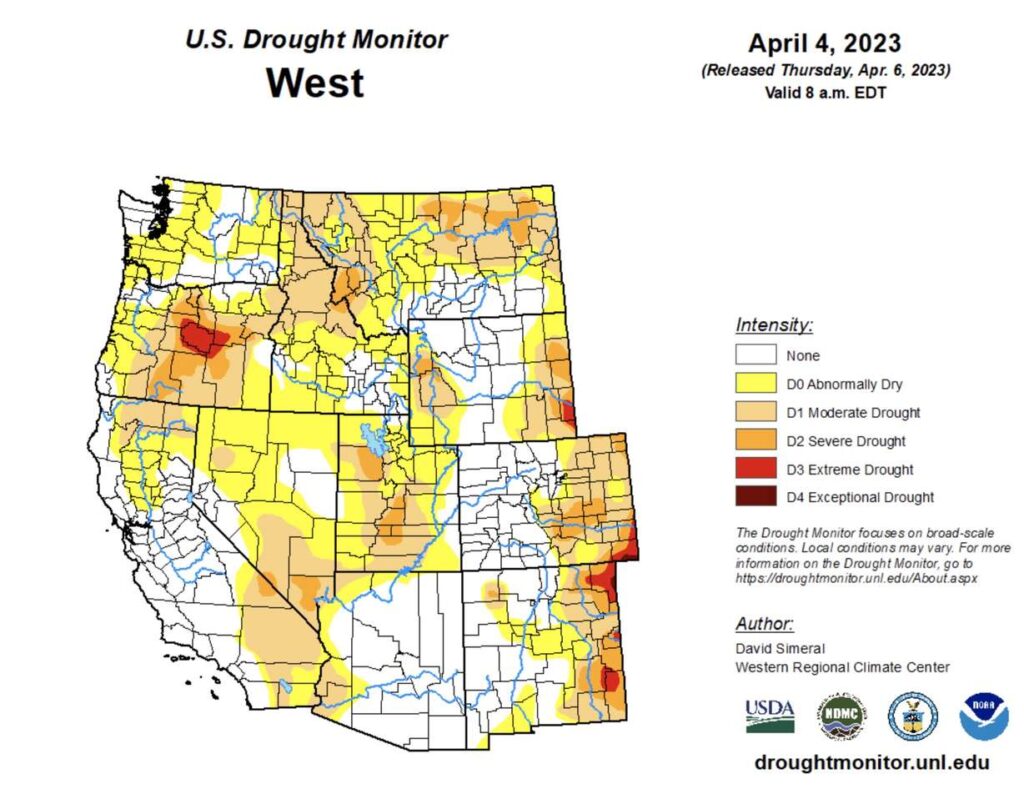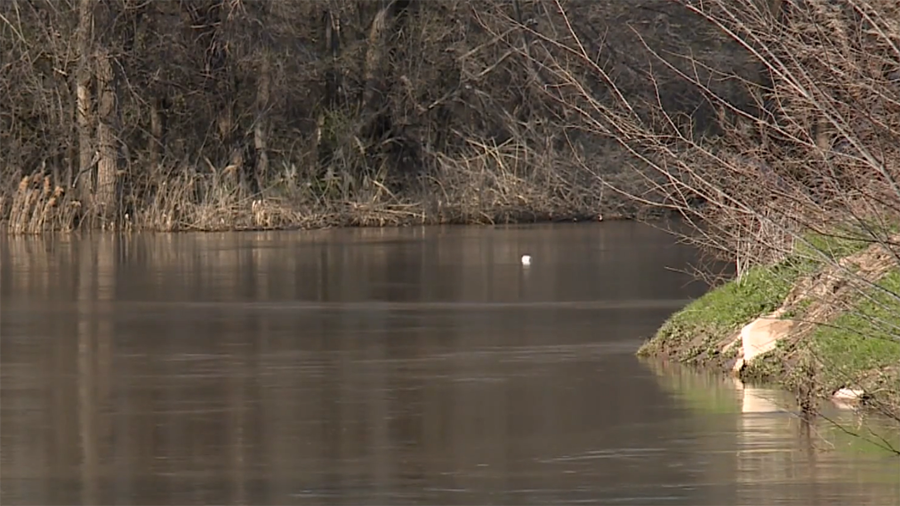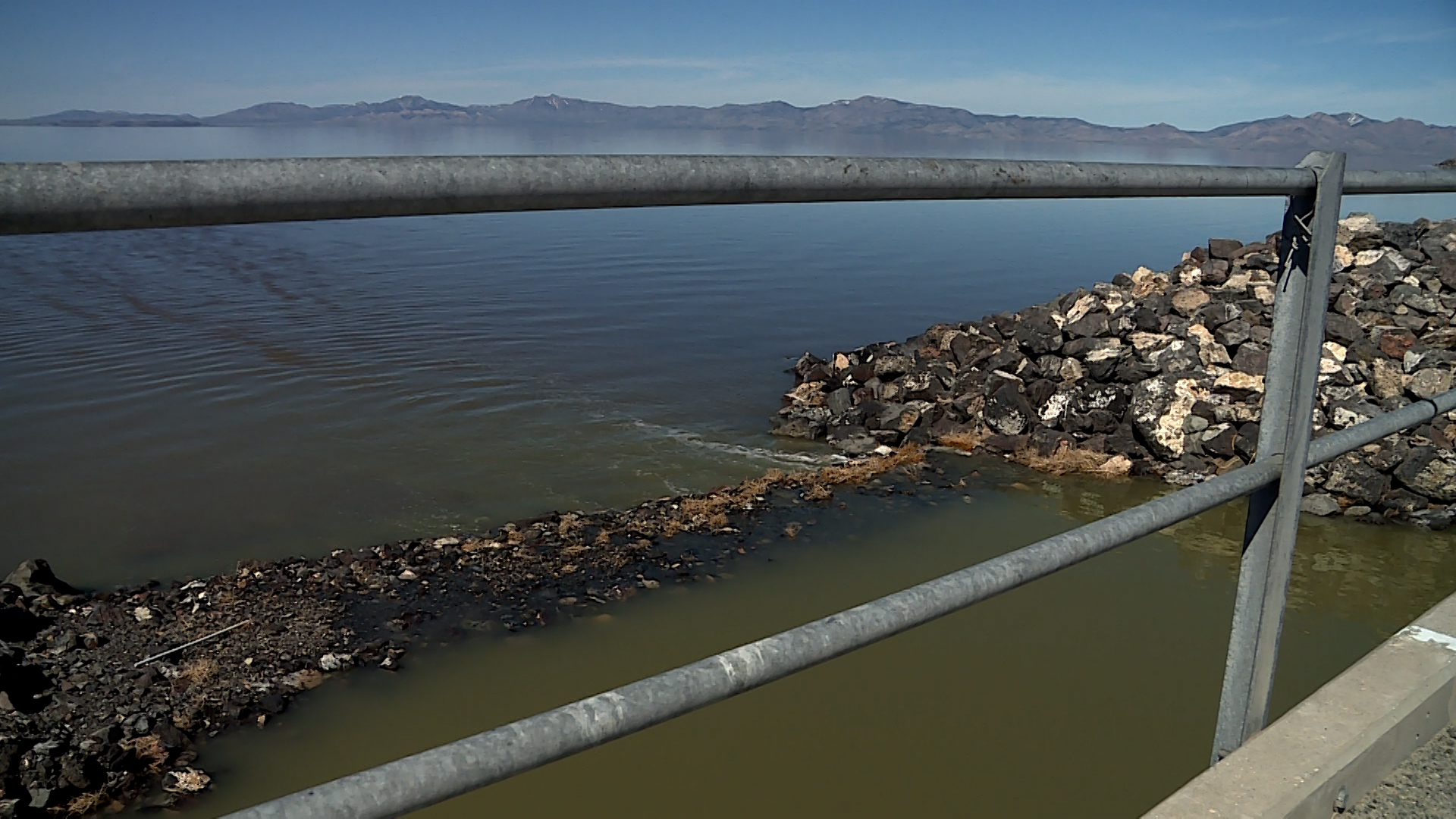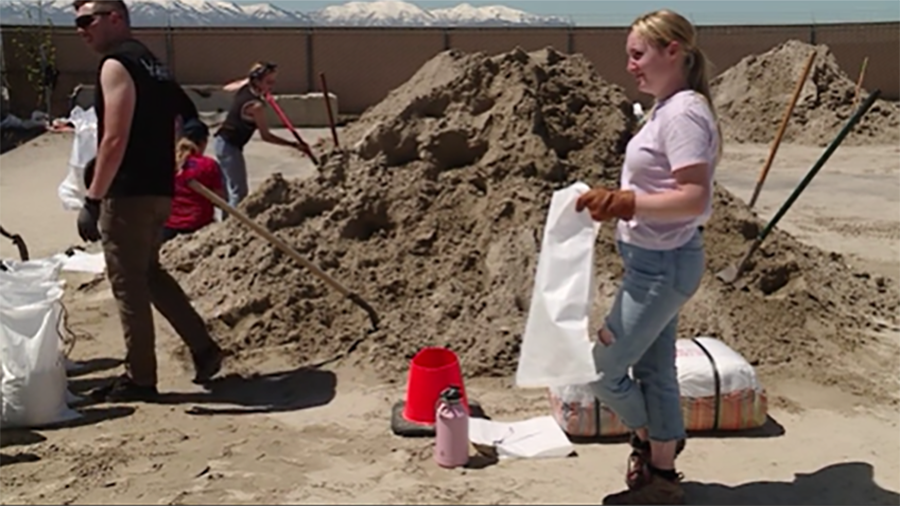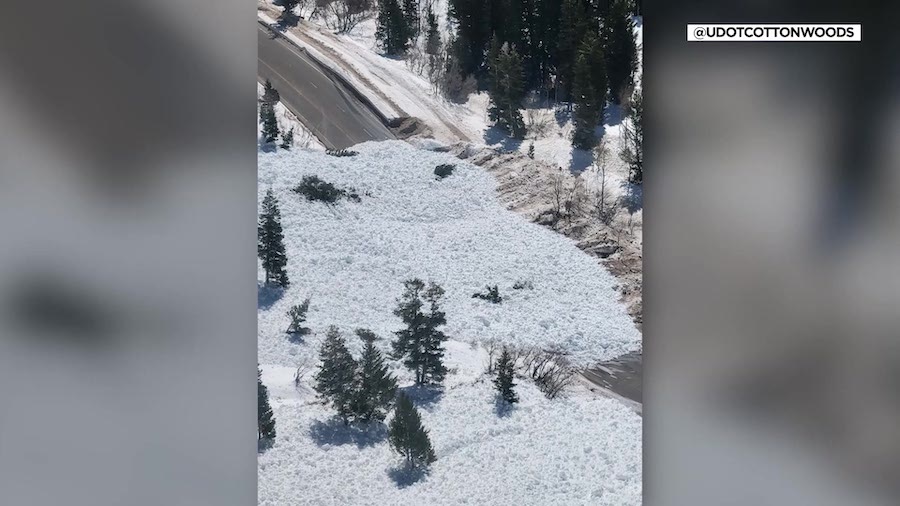UTAH'S WATER
Utah on pace for a top-5 water year. How is the rest of the West faring?
Apr 11, 2023, 1:34 PM
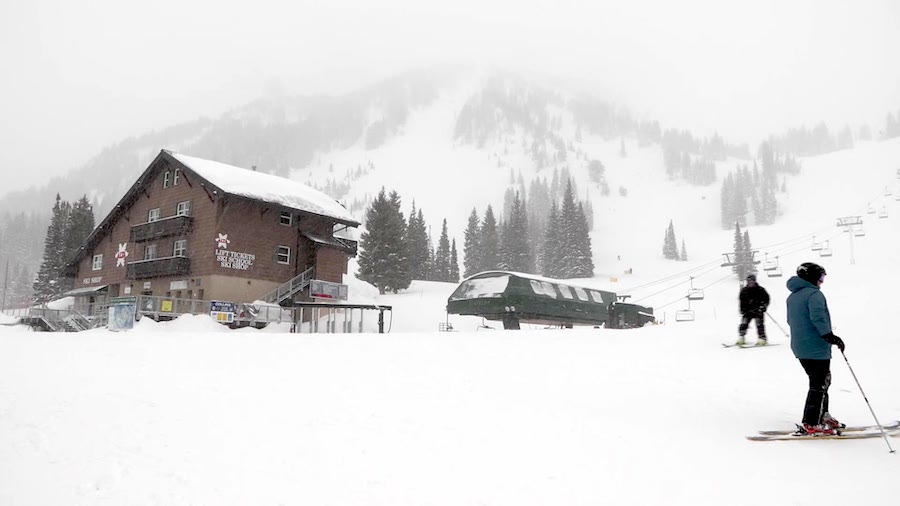
Alta Ski Area obliterated its all-time snow record this season, and the resort passed the 800-inch mark for the first time on March 31, 2022.(KSL TV)
(KSL TV)
SALT LAKE CITY — This has been an extraordinarily wet stretch in Utah, and no, it’s not just the mountain snow.
The Beehive State is on pace for its fourth-wettest water year on record at the halfway point in the year, according to new preliminary data released by the National Centers for Environmental Information on Monday. Utah has received 10.89 inches from the beginning of the water year on Oct. 1 through the end of March, according to the agency, which compiles all the National Weather Service’s valley and mountain sites across the state,
For comparison, Utah received 12.06 inches of precipitation throughout the entire 2022 water year. This year’s figure, at the halfway point, is also more than the complete 2020 and 2021 water years, which is when the current drought became a statewide issue. The first-half record is 12.41 inches set during the 2005 water year, while the driest is 2.61 inches set in 1977.
At 6.85 inches over the first three months, 2023 is also on pace for its third-wettest calendar year on record, as well. Utah only received 7.24 inches of rain in all of 2020, the state’s driest calendar year dating back to 1895.
The statewide precipitation update comes as the statewide snowpack reached 30 inches of snow water equivalent by April 7, breaking the previous state snowpack record set in 1952 along the way. That figure is based on the water within the snow at 114 Natural Resources Conservation Service mountain sites scattered across the state. More than an inch of that has already melted over the last few days as temperatures warm up this spring.
The precipitation over the last six months has been greatly beneficial to Utah’s reservoirs and drought situation.
- Utah’s primary reservoirs, collectively, are up to 56% full, up from 42.5% in October, according to the Utah Division of Water Resources. This percentage is expected to continue to rise in the coming weeks and months as the snowpack melts.
- The U.S. Drought Monitor lists that 40% of Utah remains in at least a moderate drought, including 8% in severe drought; another 50% remains “abnormally dry.” About 95% of the state remained in at least severe drought at the start of the water year, including 56% in extreme drought.
With the drought not over and the likelihood of the state slipping back into deep drought in the future, Utah Division of Water Resources director Candice Hasenyager reiterated last month that residents should continue to take steps to reduce water consumption so more water remains in the statewide system.
“We have a chance to take full advantage of this year’s snowpack by taking steps to be drought-resilient,” she said.
Other precipitation in the West
Of course, Utah isn’t the only Western state benefitting from what meteorologists call an “outlier” season. The reoccurring jet stream that fed the Beehive State storm after storm over the past few months did a lot of good across most of the West, while some missed out at times.
“This was not localized to Utah itself. California has had an exceptionally large amount of precipitation … just because there were so very few times throughout the course of this winter where we’ve had that high pressure in place (to block storms from arriving),” National Weather Service lead meteorologist Monica Traphagan told KSL.com last week. “It’s allowed us to be in this active storm track for basically the entire season.”
The Pacific systems have primarily entered the West via California before heading east instead of coming from the Pacific Northwest. This is why the Golden State, Nevada and Utah are all on pace for well above normal water years, while Idaho, Oregon and Washington are all currently below the states’ respective 20th-century averages for this point in the water year, according to the National Centers for Environmental Information data.
The Southwest states also received more storms than what is expected during a typical La Nina winter, helping those states have slightly wetter-than-normal conditions, too. Here’s how all other Western states have fared between Oct. 1 and March 31:
- Arizona:4 inches (23rd-wettest first half on record)
- California:31 inches (10th-wettest first half on record)
- Colorado:43 inches (19th-wettest first half on record)
- Idaho:43 inches (54th-driest first half on record)
- Montana:62 inches (58th-wettest first half on record)
- Nevada:05 inches (fifth-wettest first half on record)
- New Mexico:33 inches (35th-wettest first half on record)
- Oregon:97 inches (37th-driest first half on record)
- Washington:66 inches (27th-driest first half on record)
- Wyoming:2 inches (35th-wettest first half on record)
This led to some huge snow totals in the West, too. The National Centers for Environmental Information acknowledged in a report Monday that California’s statewide snowpack ended up 237% of normal by the end of March, while Flagstaff, Arizona, has received more than 13 feet of snow, its snowiest season in over 40 years.
The West’s drought improvement
In addition to Utah, “excellent” snowpack conditions across drainage basins in California, Idaho, Montana, New Mexico, Nevada, Oregon and Wyoming are helping ease drought conditions across the region, Western Regional Climate Center climatologist David Simeral wrote in a report last week.
This map shows the West’s drought conditions as of April 4. While 31% of the region remains in at least moderate drought, only 1.2% is listed in at least extreme drought. (Photo: U.S. Drought Monitor)
This is why the West, as a whole, is slowly moving away from extreme drought conditions, much like Utah. The U.S. Drought Monitor currently lists 1.2% of the region in extreme drought, down from nearly one-fifth of the 11 states at the beginning of the water year. The areas most affected are central Oregon, as well as some eastern portions of Colorado, New Mexico and Wyoming.
Close to one-third of the West remains in at least a moderate drought; however, National Centers for Environmental Information adds that conditions are expected to continue to ease in the West as storms continue to impact the region in April.
It goes to show how important this water year has been not just for Utah but the entire region.

